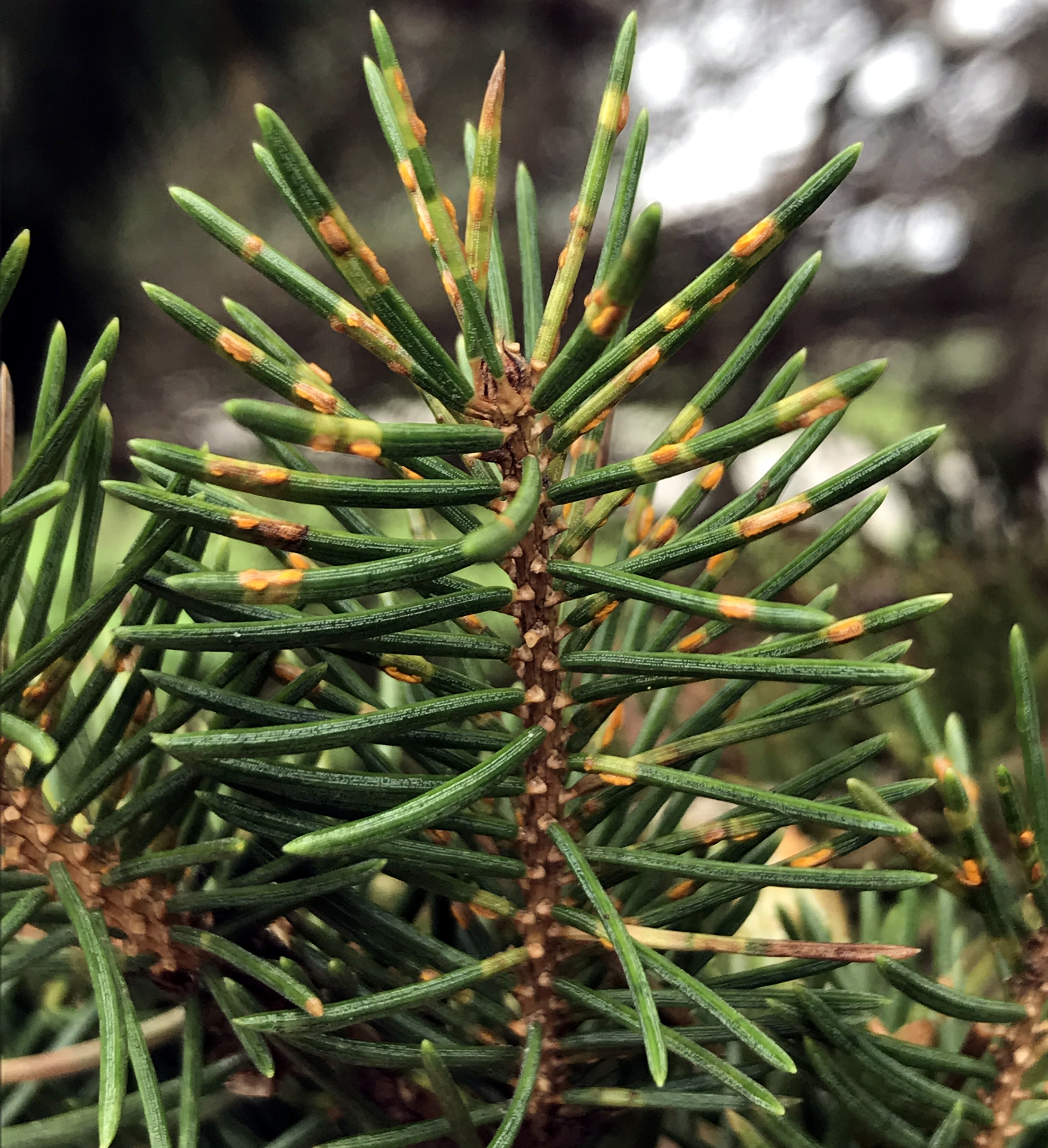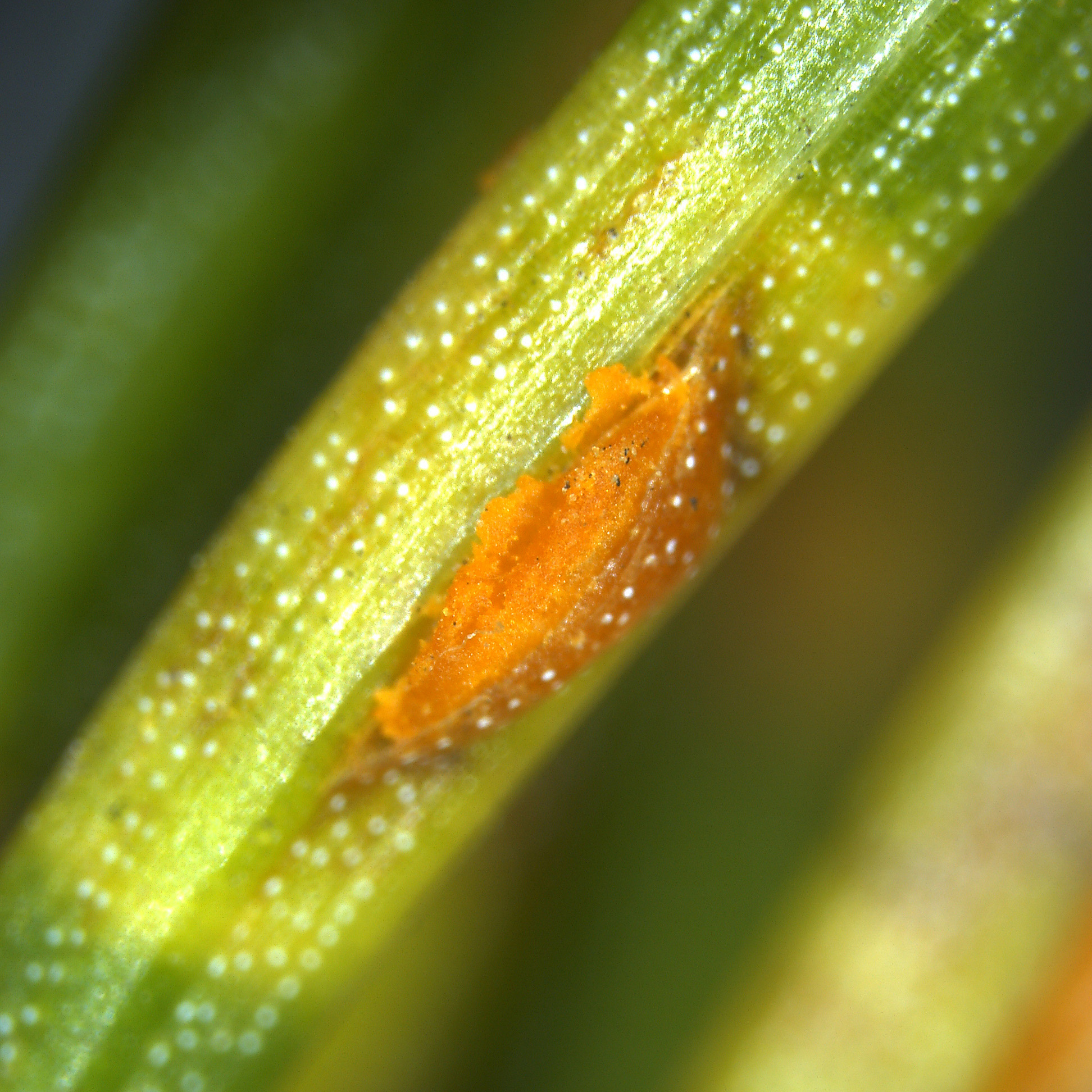Bands from Weir’s cushion rust visible on infected spruce needles
Yellow spots or bands are visible on infected Serbian and Colorado blue spruce needles. Weir’s cushion rust can cause discoloration and pre-mature needle loss.

Weir’s cushion rust (Chrysomyxa weirii) is found in eastern and western regions of the United States. It can infect most spruce species but is most commonly found on Colorado blue spruce. Unlike other rusts that we find on spruce in Michigan, Weir’s cushion rust does not have an alternative host. This means the fungus can complete its entire life cycle on spruce. The fungus overwinters in needles infected during the previous growing season.
Last summer and fall, needles on last year’s shoots developed yellow spots or bands as a result of this disease. These spots and bands may intensify to give the tree a greenish-gold appearance during spring when tiny, blister-like pustules develop in the yellow areas. At bud break the blisters burst, releasing yellow-orange spores. Splashing and wind-driven rain spread these spores to the emerging needles on the same or adjacent trees.

The infection period can continue for two to three weeks and the infection rate increases with high moisture. Newly infected needles harbor the rust fungus until bud break the next year, when again blisters containing spores develop, completing the fungal life cycle. Infected needles continue to yellow, turn brown and fall off as spring/summer progress. Spores are not produced on dead needles.
To prevent infections of the new needles, apply fungicides containing chlorothalonil when 10% of the buds have broken. Make two additional applications in seven-to-10-day intervals. Continue fungicide applications until needles are mature or the symptomatic needles have dropped to the ground (approximately three to five sprays total). We have seen damage to the new foliage of Colorado blue spruce from chlorothalonil applications. Check the label to make sure the product you select is labelled for use on blue spruce.
If you see bands at this early stage, send a sample to Michigan State University's Plant & Pest Diagnostics to confirm that is Weir's cushion rust. There is a fee for this service.
For more information, see “Weir’s Cushion or Spruce Needle Rust: Chrysomyxa weirii“ by Cornell University.





 Print
Print Email
Email

